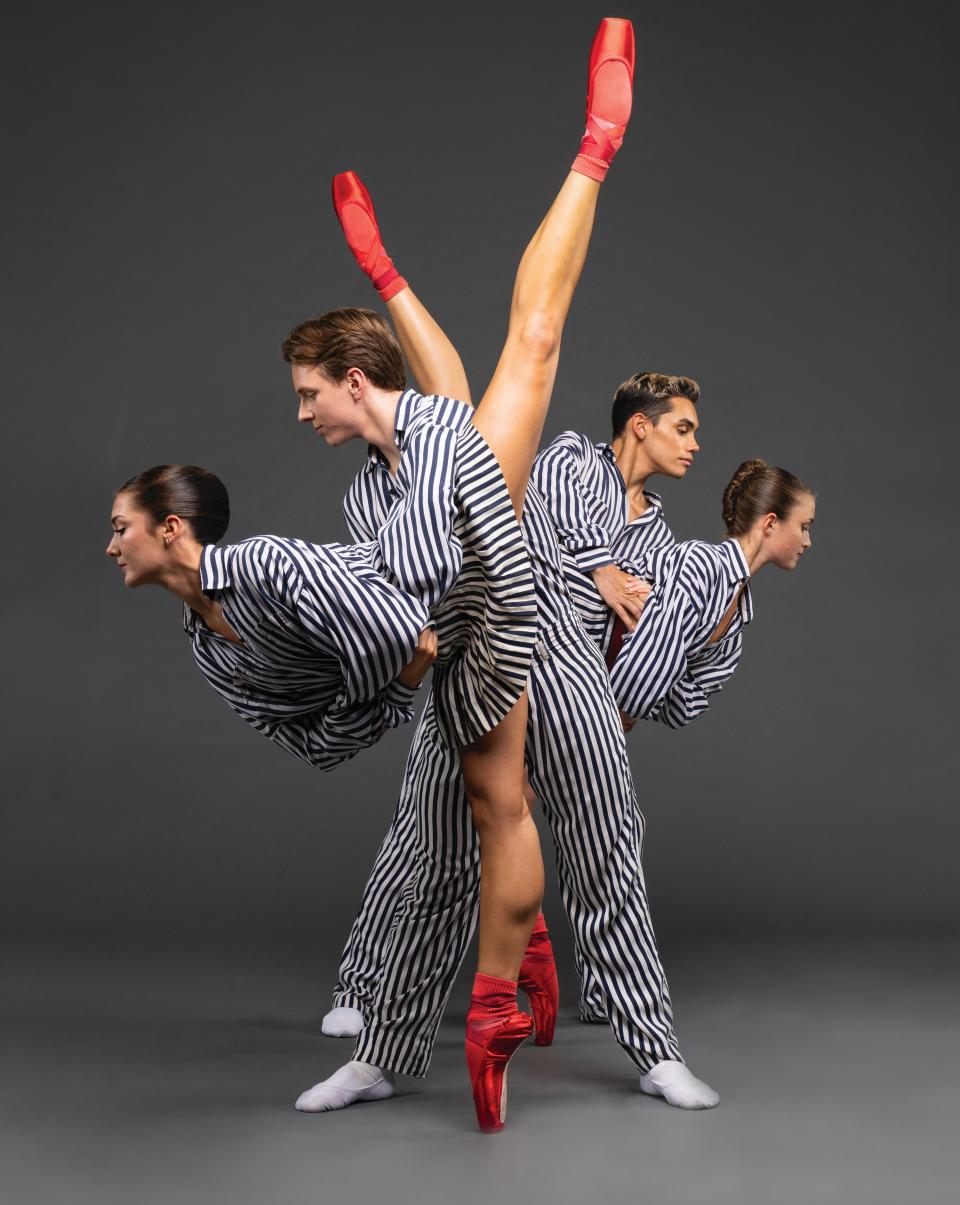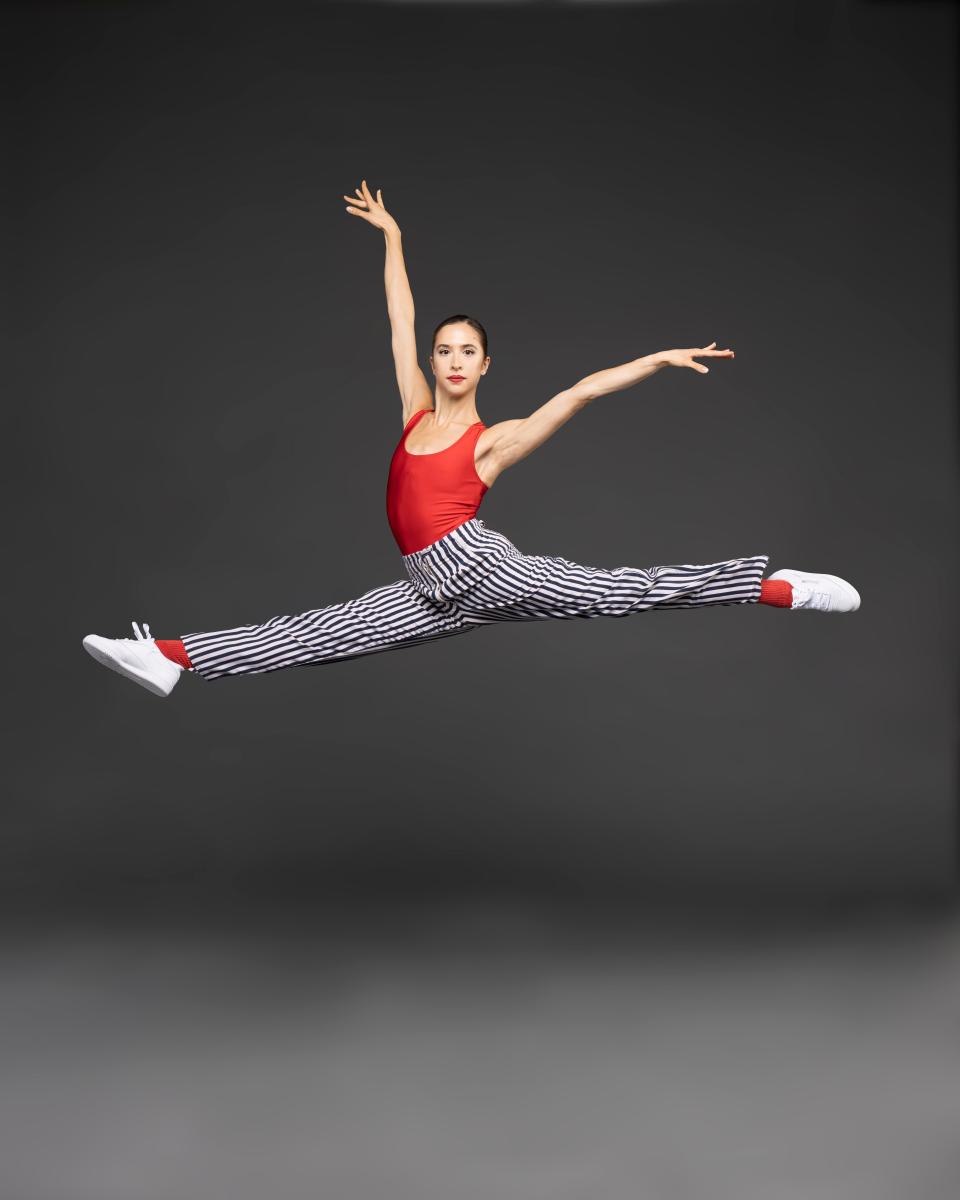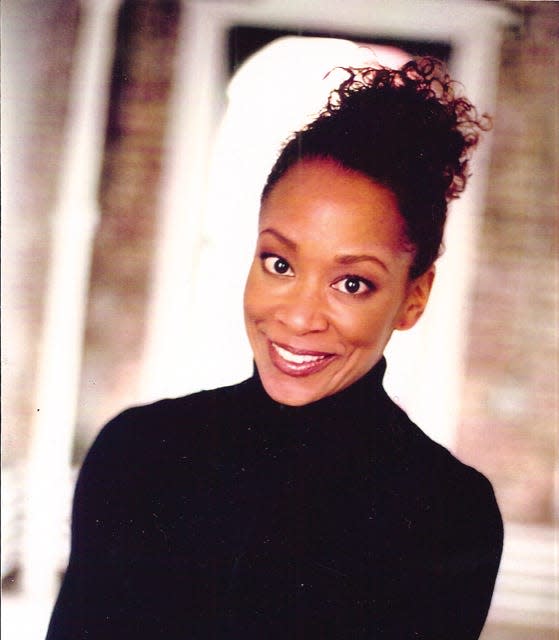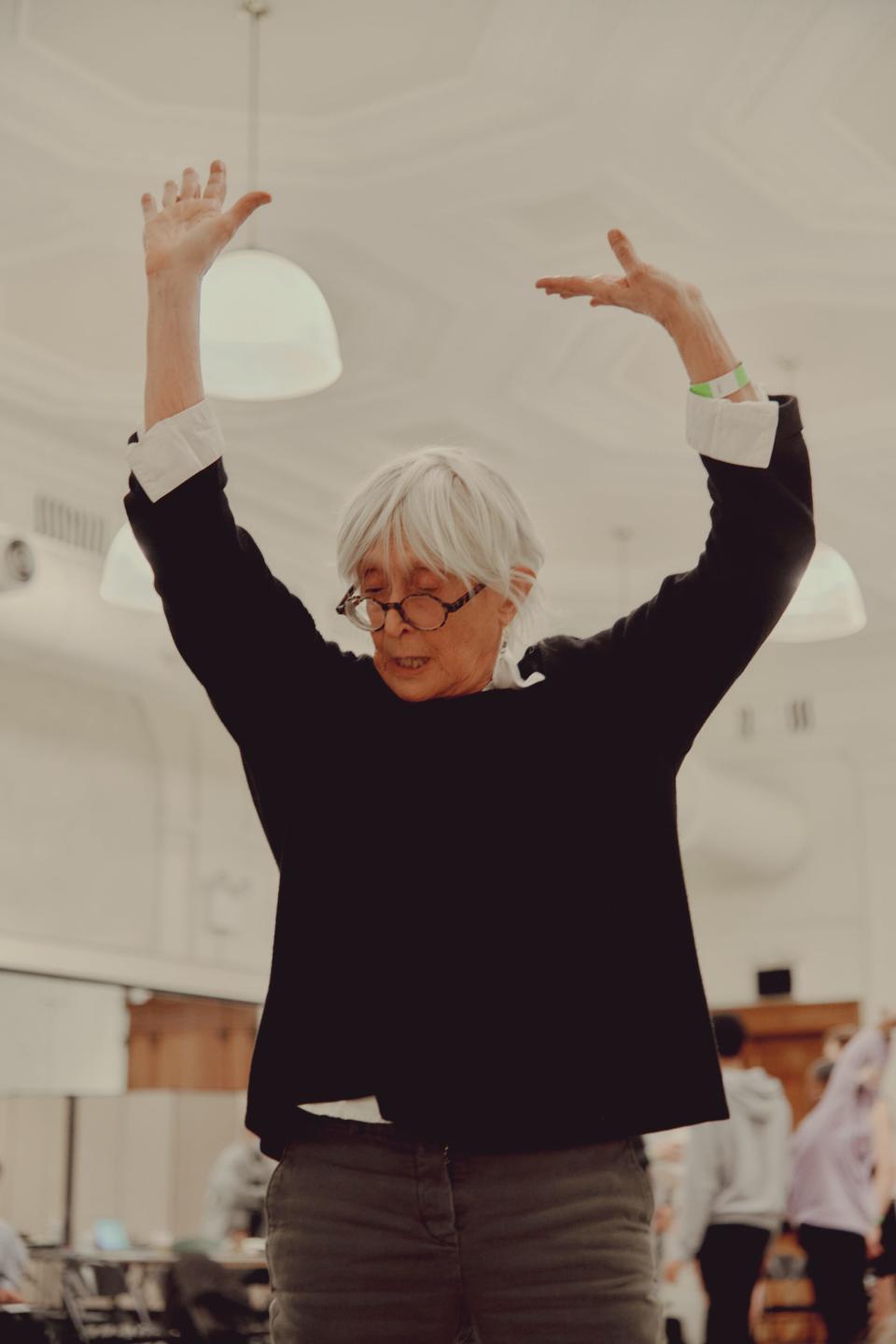Sweating through creativity: Former dancer recalls creation of Tharp’s ‘Upper Room’
- Oops!Something went wrong.Please try again later.
- Oops!Something went wrong.Please try again later.
Shelley Washington remembers as if it were yesterday when choreographer Twyla Tharp first began making “In the Upper Room” on her and other members of Tharp’s company in 1986.
She remembers how Tharp’s hands emerged from the sleeve of her beautiful blue silk shirt as she raised an arm. She remembers how the dancers peeled off layers of clothing as the grueling rehearsals, a test of their endurance, wore on. She remembers Tharp taking a movement phrase and asking them to do it in reverse, backwards, upstage, downstage, with syncopation, skipping progressions or changing the order of combinations.
And she remembers Tharp – who was prone to taping herself experimenting alone in the studio – handing her a video and asking her to put together, on her own, different sequences she’d noted by time frame (such as, “from 38:11 to 39:42”). That segment, created for Washington, became the first section of the nine movement, 39-minute marathon work that has become legendary in the dance world for being the ultimate test of a dancer’s stamina and is “a bucket list for almost everyone.”

“It’s a big challenge every time you do it,” says Washington, 69, who is staging a reprise of “In the Upper Room” for the Sarasota Ballet’s third program of the season, “Moments of Meaning,” which also includes George Balanchine’s “Theme and Variations.” “But, like anything in life, the more you can learn to use your muscles, the floor, the music, the other dancers, the easier it becomes. There’s some kind of beauty in the fact that if someone falls and gets back up, you don’t remember it in the end. It’s just if you can get through it.”
Washington, then in her early 30s, and several other members of the original cast had just come off a year of performing in “Singing in the Rain,” when Tharp began the choreography. They were dancers, but not necessarily ballet dancers and Tharp’s mix of modern dance, athletics and ballet (“We loved to slide and slip and turn and speed and now we had the dreaded rosin box”) was a challenge.
As was, for dancers just coming off a Broadway show with traditional timing, the music by the 20th century composer Phillip Glass.

“I couldn’t count past four,” Washington says facetiously.
But in the end, the counting wouldn’t make much difference anyway, because the music Tharp choreographed the piece to, albeit by Glass, did not end up being the music used for performances. The composer created an entirely new score for the work after it was already choreographed.
“One day she comes in and puts a new CD in the CD player and says, ‘Do what you always do,’” says Washington of Tharp. “The third section, which we had learned in ‘eights’ was now all in ‘sixes,’ which completely changed the dynamic… In the ninth section, when we did it originally, there was no vocal singing and then one day we come in and it’s – ‘Laaaaaahhh!’ I’d danced it so long without the vocal, when it came in it felt like an out of body experience – like kids that can’t hear putting on hearing aids for the first time. It was off the charts.”

When designer Norma Kamali came to rehearsals to consider the costuming, she watched dancers shedding their practice gear as they got progressively hotter. Hair came down, dancers changed shoes, men took their arms out of the tops of their unitards and rolled them down to their waists. All of that was incorporated into the dance too “The stompers” (in tennis shoes) and “the bomb squad” (in pointe shoes) make way for a female “crossover,” whose hair, clothes and shoes change over the course of the ballet.
At one point in her many years of staging the work, Washington realized the reason a certain lift was so difficult for so many of the dancers she taught was because it was originally choreographed for herself and four male “stompers,” all of whom were left-handed. The same lift, repeated right-handed later was never a problem for any of them.
On the ground floor of creativity
“It was all very organic how it came to be and that’s the advantage I have of being in it from the beginning,” says Washington, the only original dancer in the piece still staging the ballet. “You know all the back stories, all the history. You start really getting into staging the works beyond the right foot goes here and the left there. There’s a fine line between do we all have to have the exact same arm or do we all have to have the same intention? Twyla was never regimented; it was the intent that mattered.”
Arts Newsletter: Sign up to receive the latest news on the Sarasota area arts scene every Monday
Meet Tania Castroverde Moskalenko: Sarasota Performing Arts Foundation hires new CEO to lead efforts for new hall

Washington, who plans to retire next year, says this “might be the only thing I danced where I fell to the ground every time after I finished.” That said, she has not allowed the Sarasota Ballet dancers – an enthusiastic and youthful group she likens to puppies repeatedly returning a Frisbee and asking for another toss – to collapse at the finale because she knows they’ll still have to pull it together for a curtain call.
“It’s challenging, it’s fun, it’s harder than most things they’ve ever done before and it’s exhilarating to pass it on,” she says. “The community of it, the whole thing. There are dancers in the wings yelling, ‘Just keep going!’ and by halfway through the ninth section, they’re flying. It’s like a marathon runner with a gorgeous gait. Repeat, repeat, repeat. You’re at the 17th mile and you just get in that groove and you keep going. You just have to finish.”
‘Moments of Meaning’
The Sarasota Ballet performs George Balanchine’s “Theme and Variations” and Twyla Tharp’s “In the Upper Room.” 7:30 p.m. Dec. 15, 2 and 7:30 p.m. Dec. 16, Sarasota Opera House, 61 N. Pineapple Ave., Sarasota. Tickets are $35-$125. 941-359-0099; sarasotaballet.org
Contact Carrie Seidman at carrie.seidman@gmail.com or 505-238-0392.
This article originally appeared on Sarasota Herald-Tribune: Former dancer brings Sarasota Ballet into the world of Twyla Tharp

